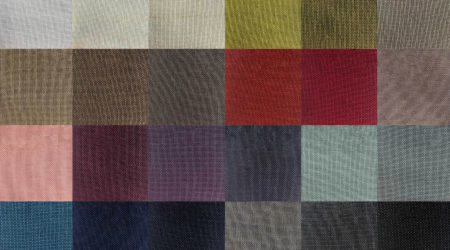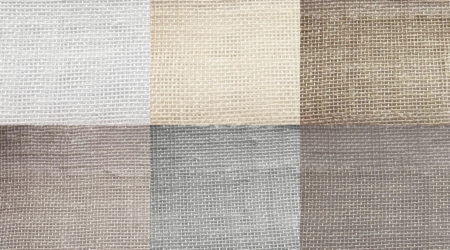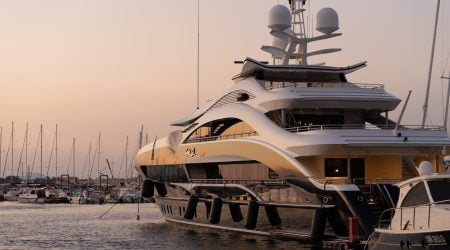New Mirage Voile IFR Range Available
Discover our brand new range of Mirage Voile IFR, made from 100% polyester and Inherently Flame Retardant.
Read MoreSpecialising in the production of theatre and stage drapes for over 30 years
Whether you require a temporary staging set-up for a brand-new production, or a multi-functional stage that will last the test of time, we can work with you to provide you with a curtain or drape solution that suits all your requirements. With over 150 years of experience in the fabric sector, we have the skills and knowledge to manufacture bespoke staging solutions that create the perfect theatre stage.
Whether you require a temporary staging set-up for a brand-new production, or a multi-functional stage that will last the test of time, we can work with you to provide you with a curtain or drape solution that suits all your requirements. With over 150 years of experience in the fabric sector, we have the skills and knowledge to manufacture bespoke staging solutions that create the perfect theatre stage.

First thing first you need to determine what type of stage you have, as this will influence the type of Theatre Drapes or Stage Curtains you will need. The different shaped venues will affect the performances and acoustics dramatically. The shape and nature of these different spaces and stages especially change the way that performances are staged. So, what are the main stage types?
Well know and well used theatre stage design. This is characterised by the audience sitting directly in front of the stage, with the seating either at one level or tiered. Most people associate a proscenium stage with theatres they have visited, as it usually has an architectural frame or arch (known as the proscenium arch) that hides the stage wings, showing the audience a picture perfect “picture frame” stage.
A thrust stage is where the acting area in front of the proscenium arch comes forward “thrust” into the spectators so that some of the audience are sitting on three sides of the action of the play. This brings audience members closer to the action, whilst maintaining a back-stage area that’s usually hidden by a theatre drape or backdrop. The famous Shakespeare Globe has a thrust stage.
The third is the unusual ‘theatres in-the-round’. This stage has the performance area enclosed by the audience on all sides. Other names for this are ‘arena stage’, ‘central stage’ or ‘island stage’. The audience gets a 360 view of the performance, giving them a great intermate performance.
Now we have taken you through the three top theatre stages, we will move onto the stage curtains – a key element to a performance. Stage drapes are designed to hide backstage areas from the audience. Stage drapes are usually made of a black or a dark alternative, light-absorbing material such as wool serge, heavyweight velour or cotton serge.

Front of House curtains are synonymous with the theatrical experience. What type of Front of House curtain all relies on the space you have to play with, budget you have to spend, and stage you have to dress.
Traveller Stage Curtains
These are the most popular of Front of House curtains, and are great if you don’t quite have enough space for a fly curtain. As these are drawn into the wings, they create a sensational opening. The fabric we normally recommend is our Cotton Velvet Velour due to its excellent light and sound masking properties.
Fly Stage Curtains
Fly Stage Curtains are the types of curtains that you expect to see in a theatre. It is sewn as one drape that rises up with a counterweight and built in fly system. Whether you want a heavyweight fabric like Polyester Velvet, or a lighter style such as Dupion Silk, we can advise on the best fit for your purpose. If you have a Proscenium stage it will require more fabric than others, for example legs and borders.
Curtain Legs
Curtain legs are narrow vertical stage drapes that are used to mask the sides of the stage. Theatrical legs are used predominantly as a masking tool to stop the audience from seeing stage hands, equipment and performers off-stage. They can also be used to create the impression of depth on the stage when multiple legs and borders are used.
Borders
The Valance curtain is the horizontal strip of fabric that spans the entire width of the stage, completing the frame of the proscenium. The Valance curtain is predominantly constructed using the same fabric, colour, pleating and style of the grand drape and legs to create a consistent and complete aesthetic for your performing space. The role of the Valance curtain is to shield any hung rigging or lighting from the audience’s vision as to not hamper their immersive theatre experience.
Valance
Similar in style and purpose to the Valance, the Border curtain is also a horizontal piece of fabric that spans the width of the stage however, the Border curtain is situated behind the main valance acting as an additional screen of rigging, tracking, systems and light configurations for the audience. The height and drop of both the Valance and Border are critical to ensuring optimal sight lines for the audience and will vary from stage to stage.
Cyclorama Backdrops
A Cyclorama is a large piece of fabric situated at the back of the stage which when lit correctly is used to represent the sky or open space. The fabric is usually held concave to create the illusion of depth and distance or unlimited space. Cycloramas, known as cycs, can also be projected on to create additional effects, common uses of this include clouds or stars to connote the night’s sky. In order to best achieve this effect cycs must be seamless, so we suggest using filled cloth or seamless white canvas when manufacturing yours.
Once you have decided what fabric and style stage curtain or drapes you need, you will need to understand its dimensions, fullness and finishes.
The width of fabric means the length across from left to right when fabric is flat. This is the number one measurement when it comes to fabric, and is ordinarily taken in metres.
As well as the width of your fabric, the drop is just as important. This is the length of fabric from the curtain rail or track to the floor. Depending on where you’d like your curtain to end, this could measure right to the floor (and more) or skim above the ground. It’s important to remember that curtain poles, windows, and floors aren’t always level, so take this measurement in a number of places for the most accurate figure.
Fabric can be flat or have fullness. Fabric fullness is defined as the extra fabric that covers the width of a curtain pole or track, offering a pleated, gathered effect. The fullness of fabric is measured by a percentage; fabric with more fullness corresponds to a higher percentage, as much as 200%.
Here’s what each percentage means…
Flat Fabric (0%)
You can purchase your fabric without fullness. Flat fabric still has its uses in curtains and drapes, for example as drop curtains or cycloramas.
Box Pleats (50%)
One of the most common ways to add fullness to fabric is through box pleats. Request your fabric fullness at 50% for fabric that uses 1.5 times more fabric than the finished width of the curtain. This is a perfect choice for large stage curtains – the fabric won’t be too heavy or long to gather, allowing you to fold back easily.
Box Pleats (75%)
You can also get a simple box pleats effect with 75% fullness. This requires 1.75 times more fabric, which remains versatile enough for large curtains.
Box Pleats (100%)
If you want a drape with a high fullness, 100% requires twice as much fabric. This allows a good ripple effect in your curtains.
Ripplefold (120%)
A Ripplefold style uses rolled pleats with 120% fabric fullness. You’ll need to sew snap tape to the top of the flat drape before attaching to a Ripplefold track. This fullness is ideal in a commercial setting for a more contemporary effect, especially when fabric isn’t too thick.
Shirring or Box Pleats (150%-200%)
For a soft, even fullness, shirring is appropriate. This requires between 150% and 200% fullness (2.5 or 3 times as much fabric), working best with light or medium-weight fabrics. Box pleats with a 200% fullness give you a rich, luxurious look, which is great for the main curtain of a theatre.
Over the years, we have manufactured and supplied bespoke staging solutions for a variety of different projects, working alongside some world-class artists and companies. Our creations have been used at world famous venues like the London Palladium, Manchester Area and The Royal Albert Hall. From one-off tour sets to concert halls, we’ve helped to dazzle audiences and create the perfect scene for performers.
For more information on how you can create a similar set-up through stage curtains, get in touch with one of our staging experts.

Discover our brand new range of Mirage Voile IFR, made from 100% polyester and Inherently Flame Retardant.
Read More
Discover our brand new range of Eco Voile IFR, made from 100% recycled polyester and Inherently Flame Retardant.
Read More
We now have IMO (International Maritime Organisation) Certification for the following qualities…
Read More